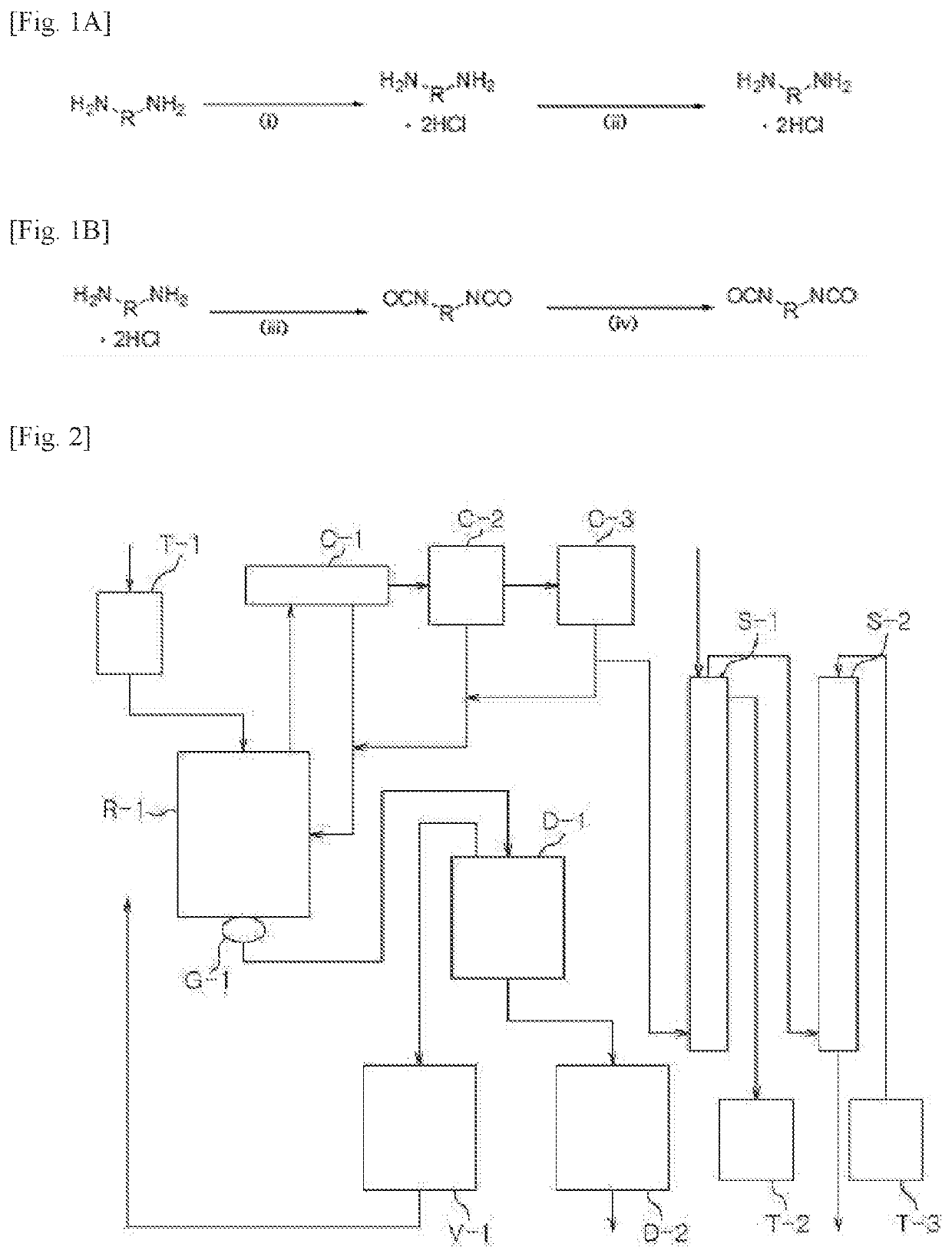Method of preparing diisocyanate composition and optical lens
a technology of composition and diisocyanate, which is applied in the preparation of isocyanic acid derivatives, isocyanic acid derivative purification/separation, instruments, etc., can solve the problems of low yield of final product, unfavorable direct reaction of phosgene gas, and the need for multiple apparatuses for agitation inside the reactor, etc., to achieve enhanced yield, less toxic, and excellent handling convenience and processability
- Summary
- Abstract
- Description
- Claims
- Application Information
AI Technical Summary
Benefits of technology
Problems solved by technology
Method used
Image
Examples
example 1-1
[0189]Step (1): Preparation of a Diamine Hydrochloride Composition
[0190]A reactor was charged with 1,009.4 g (9.46 moles) of an aqueous solution of 35% hydrochloric acid, followed by lowering the internal temperature of the reactor to 15° C. with stirring. While the temperature of the reactor was maintained at 60° C., 600.0 g (4.4 moles) of m-XDA was introduced for 1 hour. Upon completion of the introduction, the internal temperature of the reactor was lowered to 10° C., and it was stirred for 1 hour. Thereafter, 1,500.0 g of tetrahydrofuran (THF) was introduced, and the internal temperature of the reactor was lowered to −5° C., followed by stirring for 1 hour. Upon completion of the reaction, the diamine hydrochloride composition containing m-XDA 2HCl was separated by vacuum filtration using a filter, and the filtered tetrahydrofuran was recovered for reuse. In order to remove the residual solvent and water, the residual solvent and water were removed from the separated diamine hyd...
example 1-2
[0193]The procedures of Step (1) of Example 1-1 were repeated, except that a diamine hydrochloride composition was obtained by introducing 1,400.0 g of THF, and a diisocyanate composition was prepared therefrom according to the procedures of Step (2) of Example 1-1.
example 1-3
[0194]The procedures of Step (1) of Example 1-1 were repeated, except that a diamine hydrochloride composition was obtained by introducing 1,350.0 g of THF, and a diisocyanate composition was prepared therefrom according to the procedures of Step (2) of Example 1-1.
PUM
| Property | Measurement | Unit |
|---|---|---|
| pressure | aaaaa | aaaaa |
| temperature | aaaaa | aaaaa |
| light transmittance | aaaaa | aaaaa |
Abstract
Description
Claims
Application Information
 Login to View More
Login to View More - R&D
- Intellectual Property
- Life Sciences
- Materials
- Tech Scout
- Unparalleled Data Quality
- Higher Quality Content
- 60% Fewer Hallucinations
Browse by: Latest US Patents, China's latest patents, Technical Efficacy Thesaurus, Application Domain, Technology Topic, Popular Technical Reports.
© 2025 PatSnap. All rights reserved.Legal|Privacy policy|Modern Slavery Act Transparency Statement|Sitemap|About US| Contact US: help@patsnap.com



